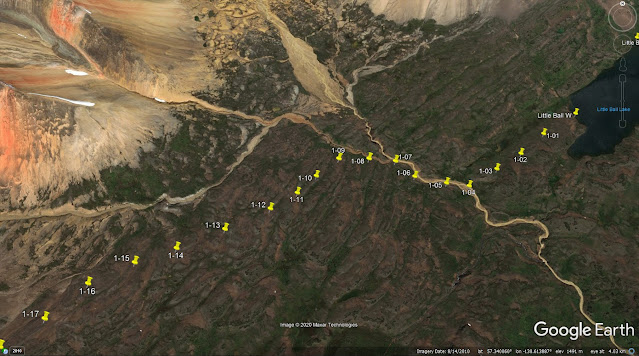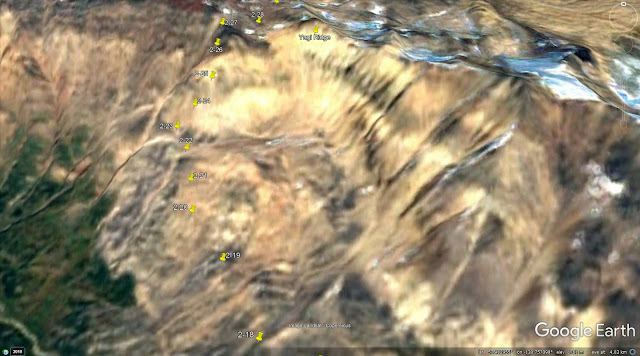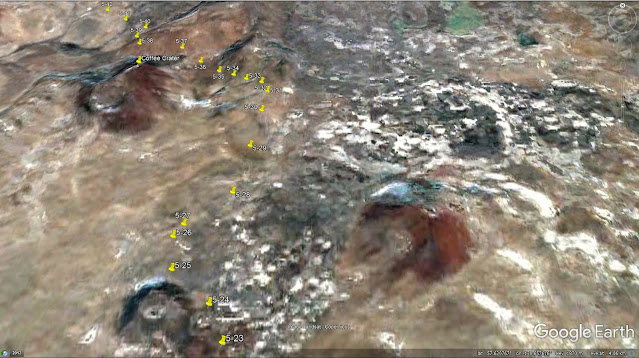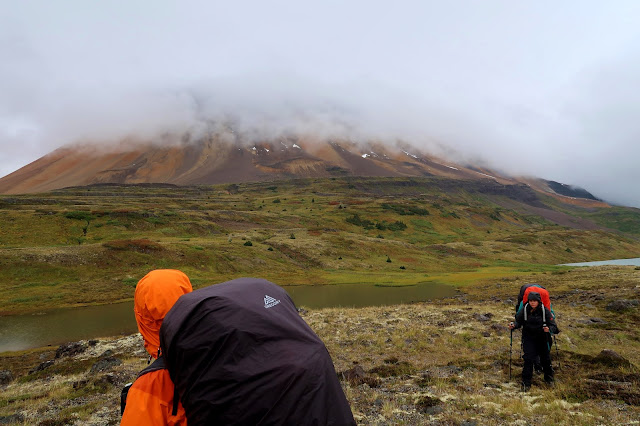Day 1 would see us fly into Little Ball Lake, hike along the south edge of the Spectrum Range, through a low pass leading to Little Arctic Plateau, and then head north to a series of small tarns just southwest of Kuno Peak (12.1 km, +501 m, -379 m)
The Alpine Lakes Air float plane base at Tatogga Lake.
We met up with the pilot the previous evening to see when we might be flying in. The weather had been very wet and unsettled over the previous several days, and that evening was no exception. The forecast for the next day was for more of the same, with conditions getting worse later in the day, so the pilot advised us to be at the dock by 8:00 am in hopes of an early start before conditions deteriorated.
The next morning the cloud deck was not too bad looking to the north west towards Buckley Lake, but to the south west, the way into Little Ball Lake, the clouds hung low over the mountains. There was another group flying into Buckley so the pilot decided to fly them in first and then see what developed as the day progressed. At this point, it was not looking good for us.
Looking north west along the flight-path to Buckley Lake. The high cloud deck and a lower elevation meant that it was a go for the Buckley lake group.
Looking south west from Tatogga Lake with low hanging clouds blocking the route into Little Ball Lake.
The float plane returning from Buckley Lake.
Around 11:00 the clouds seemed to be lifting enough to make the attempt to get into Little Ball Lake. The pilot figured we had an 80% chance at making it in, so we loaded up and crossed our fingers.
The fellowship of Edziza: Christoph, Alejandra, Myself, and Jeremy.
We didn't take many photos on the flight in because there wan't much to see - just brief glimpses of the mountains as we worked our way around the ever-shifting cloud banks. At the halfway point to the lake, the pilot commented that our chances had gone down to about 50%.
About 2 km from the lake all we could see was a solid bank of cloud in the direction we needed to go. The pilot was about to abort the approach but at the last second he spotted an opening to the south. He looped around and as he banked in from the south, there was the lake with a perfectly clear approach.
As we taxied to the gravel beach at the east end of the lake the pilot was coaching us on getting our gear out quickly and staying out from behind the plane as soon as we had it all unloaded. He needed to get back in the air as soon as possible before the clouds closed back in and stranded him at the lake. As soon as we cleared our gear, he was full throttle right off the beach. A few minute later, all was quiet - the adventure had officially begun.
The east end of Little Ball Lake just minutes after the float plane departed, with rain already starting to fall.
Halfway down Little Ball Lake looking east to were we started.
The iconic Kounugu Mountain just north of Little Ball Lake fully obscured by low-hanging clouds.
The wet, windy, dreary weather meant the usually bright colors of the Spectrum Range were muted - giving everything a watercolor like appearance.
Patches of lichens added to the colorful scenery.
Navigating through the patches of low shrubs around the lake was relatively easy.
More foul weather to the west - our route through the low pass is around the shoulder of the mountain just right of center.
The veil slowly lifting on Kounugu Mountain.
Even with the wet weather and low hanging cloud, the scenery was still impressive in all directions.
Pockets of color could be found everywhere.
Despite the rain and the recent blizzard that dumped over 60 centimetres of snow on the park, Little Ball Creek was running relatively low and clear.
Our first boots-off creek crossing at a more open and shallow part of Little Ball Creek. I think this was the most we saw of Kounugu Mountain.
Cold and wet on the outside, but still enjoying the day.
Water color views with rain dappling the pond.
The Spectrum Range at its best.
I should mention here that none of the photos on this blog have been enhanced, and appear just as they were taken. The colors you see are exactly as they look when you are there. It truly is a spectacular place to be.
Lots of snow higher up on the slopes was a constant reminder of the blizzard that swept through Edziza the week before.
Wolf tracks were common and I was hoping for a sighting, even at a distance, but they proved to be elusive.
Green sandstone - just a small patch, and only seen in this one location.
On the approach to the pass.
Looking west to the low pass leading to Little Arctic Plateau.
The final approach to the pass with the weather starting to go from bad to worse.
This was the last picture I took on day 1. As we cleared the pass we were hit with strong winds and driving rain. We slogged it out for the last six kilometers to a series of small tarns just east of Tadekho Hill. Out on the plateau there was little shelter from the wind. It was all we could do to get the tents set up while keeping things dry, have a cold dinner, and climb into bed. I somehow managed to get a good nights sleep despite the driving wind and rain pelting the tent. Even with the challenging conditions, it felt good to have day one under our belts - we were all warm and dry in our tents and looking forward to tomorrow.
















































































